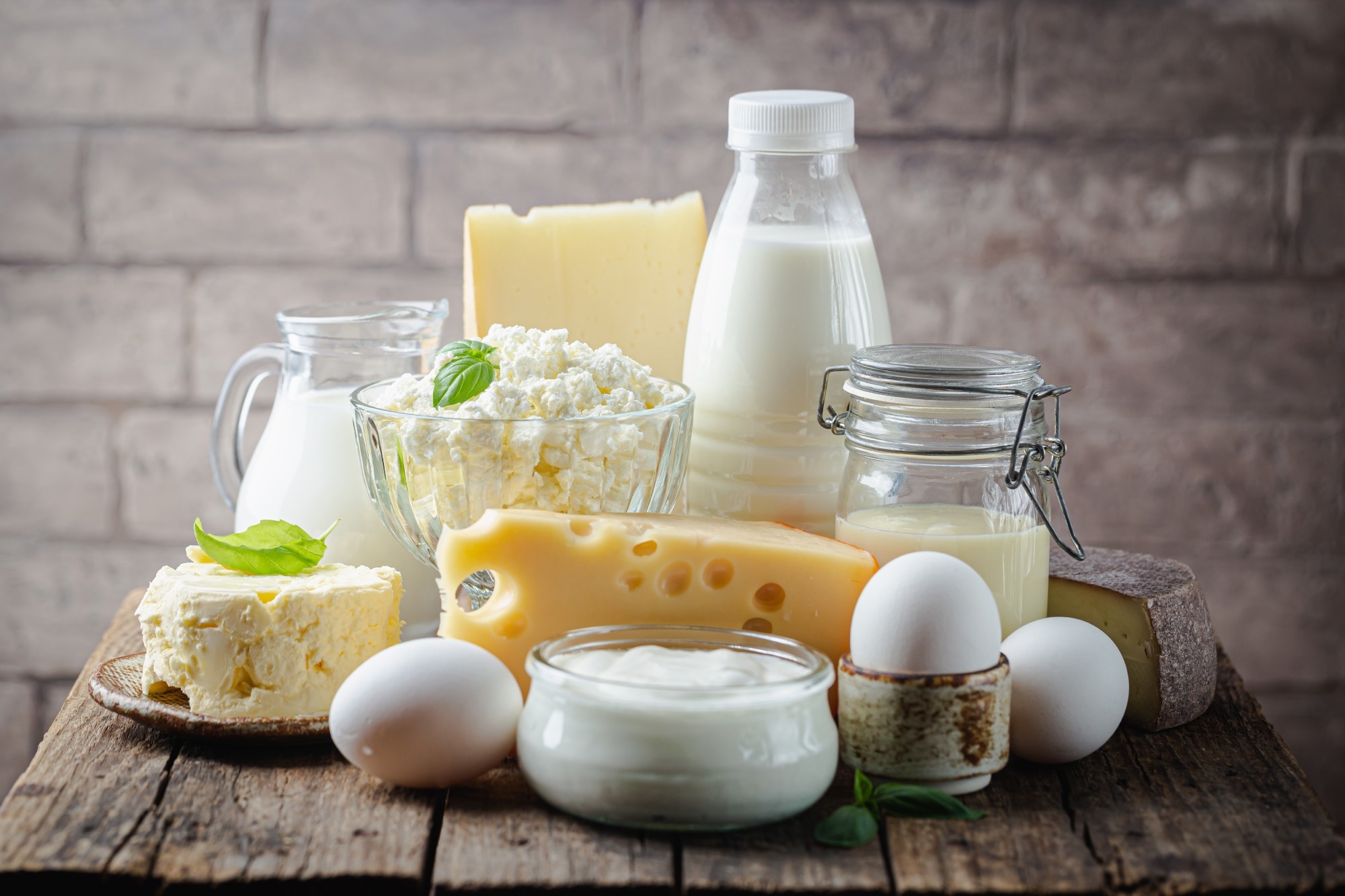In a recent study published in the Nutrients Journal, researchers determined the links between dairy consumption and gastrointestinal (GI) inflammatory markers.
 Study: No Associations between Dairy Intake and Markers of Gastrointestinal Inflammation in Healthy Adult Cohort. Image Credit: GoskovaTatiana/Shutterstock.com
Study: No Associations between Dairy Intake and Markers of Gastrointestinal Inflammation in Healthy Adult Cohort. Image Credit: GoskovaTatiana/Shutterstock.com
Background
The American dietary guidelines advise consuming three dairy servings daily to obtain crucial nutrients and enhance bone health. Dairy intake has been associated with a lower risk of diabetes, cardiovascular disease, and mortality rates. There has been little investigation on how dairy products affect adult GI health, especially fecal calprotectin levels.
An intervention trial with males revealed that dairy consumption does not significantly impact gut permeability among healthy individuals.
Consuming fermented dairy and yogurt has been linked to reduced gastrointestinal symptoms, improved lactose digestion, and varying outcomes in people with irritable bowel syndrome. According to in vitro studies, dairy, and dairy-derived products may enhance intestinal barrier function.
In sum, previous reviews have linked dairy consumption to reduced systemic inflammation. However, GI inflammation and dairy consumption in healthy adults have received less scrutiny.
About the study
In the current cross-sectional observational study, the investigators evaluated relationships between reported dairy consumption and GI inflammation markers among healthy adults aged between 18 and 65 years from the United States (US).
The team hypothesized an adverse link with yogurt consumption, indicating a protective impact, and no connections with fluid milk, cheese, and total dairy intake.
Subjects completed a food frequency questionnaire (FFQ) to determine their habitual intake and 24-hour dietary recalls to record their recent dairy consumption. The analysis also comprised 295 individuals who gave a stool sample and 348 participants with a plasma sample.
Stool inflammatory markers, such as myeloperoxidase, neopterin, and calprotectin, were measured in addition to plasma lipopolysaccharide (LPS)-binding protein (LBP). Fecal calprotectin is a frequently used and generic clinical marker, fecal myeloperoxidase increases when neutrophils are involved, and fecal neopterin increases when macrophages are involved.
Sex, body mass index (BMI), and age were covariates in regression models investigating relationships between dairy intake factors and inflammation indicators.
Since yogurt is consumed episodically, the team examined the variations in inflammation levels among non-yogurt consumers and yogurt consumers, i.e., those who consume over zero cup equivalents per day reported during recalls.
The present research investigated the relationship between dairy intake and fecal GI inflammation markers and plasma LBP across a multi-ethnic group comprising normal to moderately obese males and females aged 18 to 65 years with routine and recent dietary consumption assessments.
Furthermore, fecal neopterin, fecal calprotectin, and fecal myeloperoxidase were leveraged to measure GI inflammation.
Results
The study comprised 348 subjects with a nearly equal number of men and women. The average BMI of the subjects was 27.28 kg/m2, and the age was 40.51 years.
Subjects reported consuming an average of 1.60 cup equivalents of dairy per day, ranging from zero to 6.71. According to a conservative threshold of over 0.25 cups per day, most participants, i.e., 92%, were classified as dairy consumers.
Cheese consumption was 0.84 cup equivalents per day compared to 0.56 cup equivalents for fluid milk intake. On the other hand, yogurt consumption was lower, with an average of 0.13 cup equivalents daily.
The average levels of plasma LBP and fecal myeloperoxidase, neopterin, and calprotectin among the subjects were 10.65 μg/mL and 606.48 ng/g, 20.19 ng/g, and 65.09 μg/g, respectively. The ranges of these biomarkers differed incredibly.
The study showed no correlations between fecal GI inflammatory markers and dairy consumption, including cheese, yogurt, total dairy, and fluid milk. In addition, stratifying participants based on yogurt intake did not reveal any discernible changes in fecal indicators of inflammation, both for routine and recent consumption.
According to routine dietary intake and recent intake data, no links between dairy consumption and plasma LBP, an indicator of endotoxin exposure, were discovered. Further, there were no substantial variations in GI inflammatory markers or plasma LBP among yogurt non-consumers and consumers.
Conclusions
In sum, the present research found no correlation between dairy consumption of any sort with GI permeability or with GI inflammation across a multi-ethnic healthy US group of adults with heterogenous lactose intolerance capacity.
Further studies are necessary, especially for interventions comprising daily yogurt doses, to characterize impacts on GI inflammation and GI permeability. Moreover, these studies should include older, i.e., over 50 years, obese women and incorporate a GI challenge.